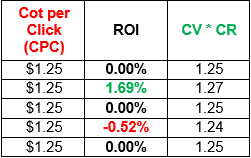A search starts with a problem or question. As a business, your goal is to begin to resolve their problem/question with your paid search ad. Before you can accomplish this goal, you must uncover the person/personality of these users and the intent of their searches. While knowing each individual user who searches and their personal intent is impossible, it is practical to create a persona to represent each group/segment of your target audience in order to better reach and begin resolve their problems/questions.
Personas - Fictional Character behind PPC Searches
Creating personas to represent segments of your target audience can greatly benefit your paid search marketing tactics. Although the process of dividing your target audience into segments and then creating representative personas for each segment will be time consuming, the effectiveness of your paid search marketing campaigns will prove that the time was well spent. Instead of building a list of keywords including how your entire target market should, could and would search for your product/search, you can focus your attention on how a single persona thinks and searches for your product or service. Being able to focus your attention will streamline the keyword list building process and make it more efficient. Also, this allows you to tailor your ad copy to the needs/wants of that single persona to compel them to take action and interact with your ads.
Intent - The “Why?” of Paid Search
How a user responds to your ads will vary depending on the purpose of their search. Fortunately, users often give marketers a glimpse into their motives through the search terms used. For instance, someone looking for “reviews for …” or “best…” is currently comparative shopping. While searchers who include “cost” or “price” are closer to making a purchase. Another indicator is the specificity of the search. A comparative shopper still researching will use general terms like “shoes”, “sneakers” or “runners.” On the other hand someone that is ready to make a decision will use brand names like “Nike” or “Reebok” or even specific product lines “Adidas Springblades.” Determining how personas search for your product or service at different stages of the purchasing cycle will help you finalize your paid search keyword list. The biggest benefit from knowing the user intent is being able to direct them to a landing page with content that answers their questions and pushes them into the next stage of the purchasing cycle.
A perfect example of this is if a user is searching for reviews, you might want to direct them to a landing page with customer reviews and testimonials. From there, offer links to showcase additional features, make a purchase, or contact a sales representative. Allow the user to discover the answers to the questions that initiated their search while guiding them through your sales/conversion funnel. This customer nurturing process all starts with the Pay per Click (PPC) keyword list building.
Pay Per Click Keyword List Building Combining Personas and Intent
When using both personas and intent breakdowns your keyword lists should form a matrix structure similar to the one depicted below.

The more personas with different intent will multiply out the number of column and rows of your chart, but it will also allow you to get more personal with real searchers. By combining persona segments with user intent, you will be able to connect with more of the real searches within your target market through you paid search marketing efforts. This personal connection will result in higher performing keywords, ad copy, landing pages, and ultimately more conversions (leads or sales.) Setting aside the time to fully work out personas and their intent could greatly boost your Pay per Click advertising ROI, proving that it was time very well spent.
If you have not created personas or leveraged user’s intent, we highly recommend that you set aside the time to give it a try. If you have done it previously, let us know what your experience has been in creating and using personas to represent your paid search target audience! In addition, if you have split your keywords into user intent segments, has it made an impact on your Pay per Click efforts?


